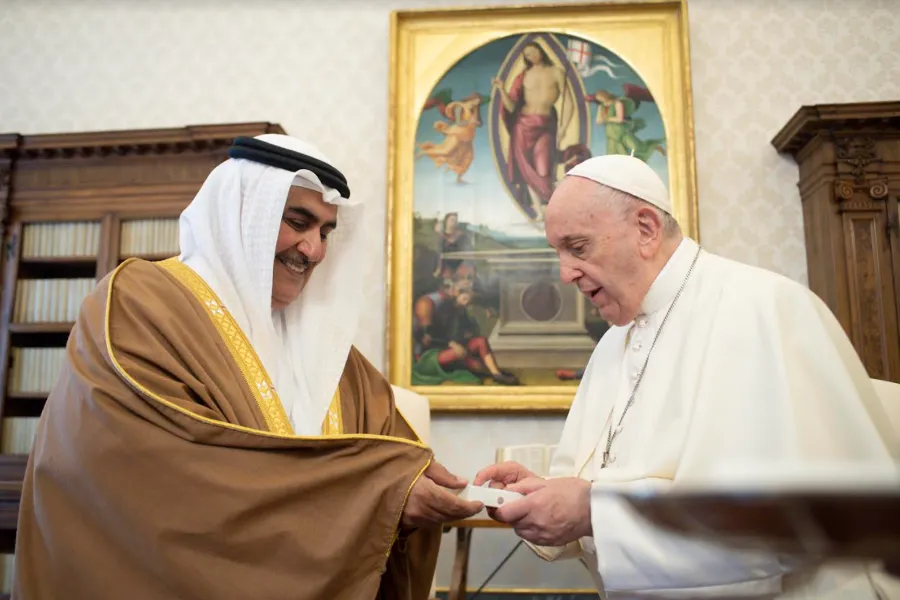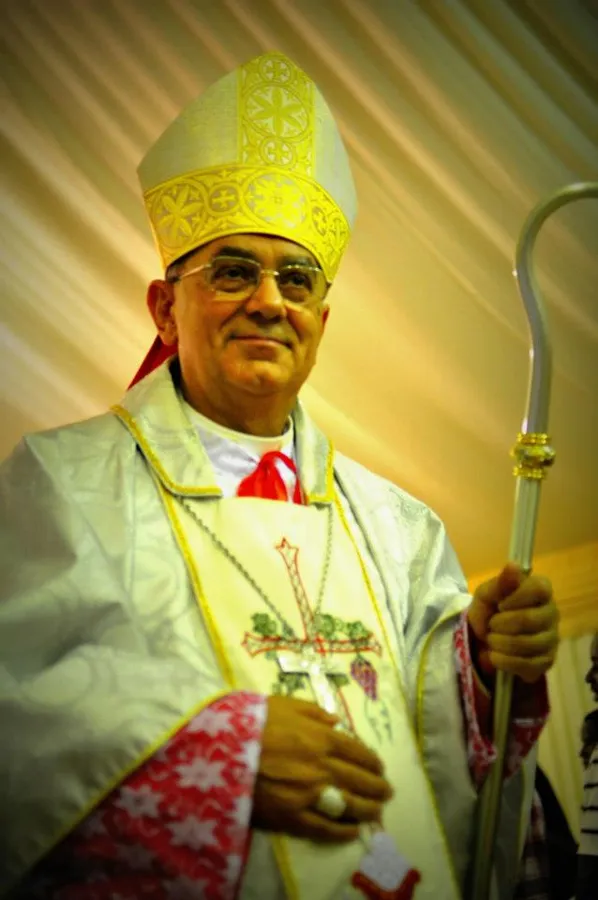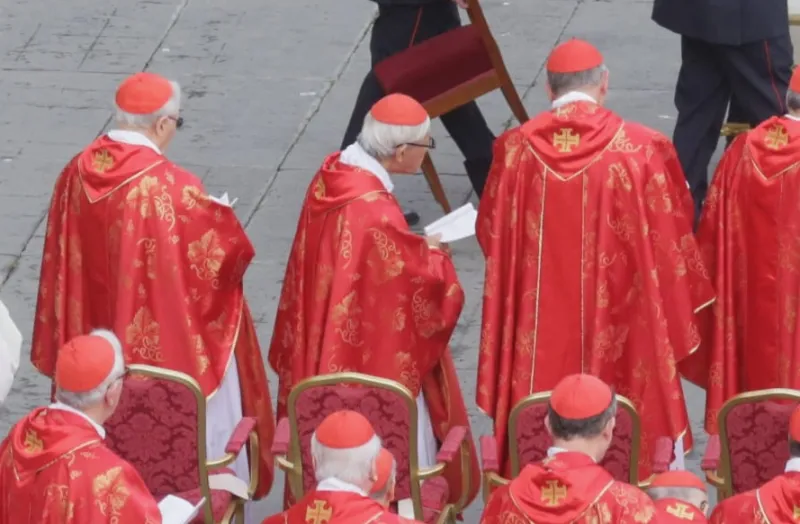
Awali, Bahrain, Nov 26, 2021 / 11:00 am (CNA).
On Dec. 10, a joyous Catholic event will take place in Bahrain, a predominantly Muslim island nation in the Persian Gulf.
Cardinal Luis Antonio Tagle, the prefect of the Vatican Congregation for the Evangelization of Peoples, will consecrate the Cathedral of Our Lady of Arabia, an ark-shaped structure seating 2,300 people.
It will be the end of a journey that began on Feb. 11, 2013, the feast of Our Lady of Lourdes, when the decision to build the cathedral was taken, reported ACI Stampa, CNA’s Italian-language news partner.
The land was a gift of Hamad bin Isa Al Khalifa, the King of Bahrain since 2002, who will inaugurate the cathedral on Dec. 9, the day before its consecration.
The king’s special envoy, Sheikh Khalid bin Ahmed Al Khalifa, had an audience with Pope Francis on Nov. 25. According to Agenzia Fides, the envoy invited the pope to visit the country on the king’s behalf.

The king personally presented a model of the cathedral to the pope in 2014.
The cathedral is part of a complex of around 95,000 square feet in Awali, a small municipality in the center of the country, which has a population of 1.7 million people and is located to the east of Saudi Arabia and west of Qatar.
The Bahrain cathedral’s website says that as soon as Bishop Camillo Ballin, the Vicar Apostolic of Northern Arabia, heard that the king had given the land for a cathedral, his “immediate reaction on hearing the good news was to thank our Blessed Mother for her miraculous intercession and [he] decided that the new cathedral would be dedicated to Our Lady of Arabia.”
A focal point of the cathedral will be a polychrome statue of Our Lady of Arabia.
The title of Our Lady of Arabia was approved in 1948. A small chapel in Ahmadi, Kuwait, was dedicated in her honor on Dec. 8 that year.
In 1957, Pius XII issued a decree proclaiming Our Lady of Arabia the main patron saint of the territory and of the Apostolic Vicariate of Kuwait.
In 2011, the Vatican officially proclaimed Our Lady of Arabia the patron saint of the vicariates of Kuwait and Arabia.
Later that year, the Holy See reorganized the Vicariate of Kuwait, giving it the new name of the Apostolic Vicariate of Northern Arabia, and including the territories of Qatar, Bahrain, and Saudi Arabia.
Ballin’s episcopal see moved from Kuwait to Bahrain, which has a significant Christian presence, estimated to be around 15% of the population.
There are an estimated 80,000 Catholics in Bahrain, many of whom are migrants from Asia, particularly the Philippines and India.
At the consecration, there will be one notable figure missing: Bishop Ballin, who died on April 12, 2020, at the age of 75, before he could see his dream of a cathedral dedicated to Our Lady of Arabia realized in Bahrain.
In a 2014 interview with CNA, the Italian bishop asked that supporters “pray for us and our spiritual life and that the Virgin Mary would send benefactors” to fund the cathedral’s construction.

The Bahrain cathedral’s website includes a prayer to Our Lady of Arabia in the run-up to the consecration:
O Most Blessed Virgin Mary, Our Lady of Arabia and our Patroness! To you, we offer up our prayers for the needs of the Church here and throughout the world.
Help us to remain one with your Son Jesus and united amongst ourselves, so that we may be true witnesses for Christ in our daily lives and that the Lord’s blessings of peace and harmony be within our families and communities always.
Trusting in your maternal intercession, we beseech you to hear our humble prayers and grant us the graces we seek… so that we may give glory to God forever. Amen.
Our Lady of Arabia, pray for us!
If you value the news and views Catholic World Report provides, please consider donating to support our efforts. Your contribution will help us continue to make CWR available to all readers worldwide for free, without a subscription. Thank you for your generosity!
Click here for more information on donating to CWR. Click here to sign up for our newsletter.






Leave a Reply